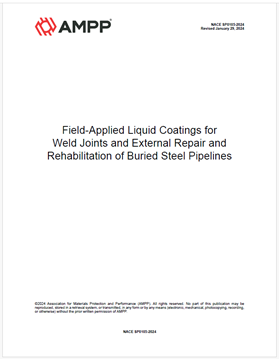Search
NACE SP0112-2023, Corrosion Management System for Atmospherically Exposed Reinforced Concrete Structures
Also Purchased
NACE SP0105-2024, Field-Applied Liquid Coatings for Weld Joints and External Repair and Rehabilitation of Buried Steel Pipelines
Product Number:
NACE SP0105-2024
Publication Date:
2024
$109.00
AMPP SP21520-2023, Acceptance Criteria for Cathodic Protection of Steel in Concrete Structures
Product Number:
AMPP SP21520-2023
Publication Date:
2023
$109.00
NACE SP0113-2023, Pipeline Integrity Management: Methods Selection and Implementation
Product Number:
NACE SP0113-2023
Publication Date:
2023
$109.00




